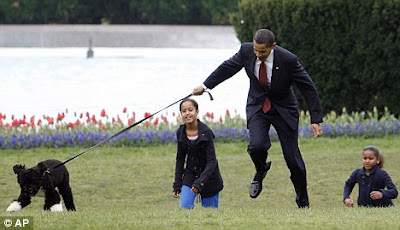 Photo: Feet of the Campesino (Oaxaca, Mexico) by Ken Light
Photo: Feet of the Campesino (Oaxaca, Mexico) by Ken Light.
**************
This sermon is from three years ago.
I had preached a slightly different version of it in Berkeley two years before. (You can make foot fetish jokes with a Berkeley congregation but not with a Greensboro one ;-))
Maundy Thursday
St. Mary’s House (Episcopal/Anglican), Greensboro
April 13, 2006
Exodus 12:1-14a
1 Corinthians 11:23-26 (27-32)
Psalm 78:14-20, 23-25
John 13:1-15
In the name of the One
who longs for our friendship,
and of Christ Jesus,
who calls us friends,
and of their Spirit,
who makes holy friendship possible,
Amen.
Only in the Gospel of John
is the footwashing the focus of the Last Supper story.
In the other three gospels, Mark, Matthew and Luke,
it is the sharing of bread and wine
as Jesus the Christ’s own life
that is at the center of the meal.
This evening we celebrate both:
with our bodies and hearts and minds,
with food and drink,
*****fruit of the earth and work of human hands
*****that become part of our own blood and bone;
with water,
*****without which nothing and no one on this planet could survive;
with touch,
*****without which we humans would wither from lack of love.
In our deeply mindful present
as we listen,
*****move,
*****touch,
*****receive,
*****offer
*****and share
we also commit
an act of memory
and an act of hope.
Feet!
Although Eucharist, the holy communion we share
with Christ and with each other
*****and with others throughout space and time
is once again the culmination of our celebration,
*****the last feast before the Good Friday fast
*****leading to Easter,
the foot-washing is at the heart of this celebration.
As the youngest child asks during the Passover Seder
*****(Remember, today is Passover),
“Why is this night different from every other night?”
We may ask:
Why is this night different?
Why on this night wash and be washed?
Why feet?
I should have said
“be washed” and then “wash”
–for we who are Jesus’ friends
receive
from him
before we can give.
And Peter, that bumbling, energetic character who repeatedly doesn’t get it
*****and for whom we can thus have great affection,
objects strenuously to precisely this:
that the one who teaches and leads,
the one who is holiness itself,
Jesus, child of Holy Wisdom,
the main man,
washes Peter and his friends
and washes us,
his friends and followers.
So that then and only then
we might do likewise.
And so, as in the storied beginnings of Jesus’ life,
the last are first,
kings kneel
and the powers of the world
turn upside down.
This is our memory.
This is our vision.
This is our hope.
Tonight we celebrate the sacrament of friendship,
of power turned upside down
in Jesus’ land, small sliver of earth and shore
occupied by a foreign empire
and
on our piece of earth
today.
Tonight is the sacrament of friendship
in both the table and the touch.
Tonight the tired and the hidden are held
and bathed
and tenderly handled.
Feet.
We don’t talk about feet much
in church.
We don’t do much with feet in church.
Feet are too –well, pedestrian is the word that comes to mind,
the word whose root comes from the Latin word for foot,
a word meaning all at once “ordinary” and “everyday-ish” and “plain.”
Feet are basic.
Feet take us places
–when we are not in wheelchairs
or in our cars.
In the land of the automobile,
we don’t use them enough
for going places.
But if we are car-less
or homeless
we may use them too much.
In Boston, at least two of the major shelters for homeless persons,
one day shelter and one overnight shelter,
have foot clinics, because feet take a lot of stress
when you’re out there,
especially in winter.
Feet.
Sometimes we paint their toes.
If we’re lucky, we get them massaged.
Practitioners of shiatsu, acupressure and other Asian healing arts tell us
that they contain points of connection to every place and organ in the body.
If you’re a moviegoer who likes French films,
you will remember a wonderful scene in the movie “Cousin, Cousine”
where the two main characters
have finally made love
and they are holed up in a hotel room together
perfectly relaxed, and one of them holds the other’s feet
and very tenderly
clips her toenails.
Now,
mention feet in relation to church
and two realities are likely to come up:
intimacy
and awkwardness.
In Jesus’ day of dusty roads and sandals
there was no need to make a point about the importance of feet
to get around.
That’s what most people used,
and the quickest non-feet land transportation
was a donkey
–maybe a horse if you were a Roman soldier;
but that didn’t apply to most people.
In Jesus’ day,
there was also no need to make a point
about the relation of feet
to earth.
Jesus didn’t have to do this
because in the world in which he lived,
this connection to the land was taken for granted.
We, on the other hand, need a reminder.
So in addition to reminding you
that when we say God loves us
we mean all the way down to the tips of our smelly toes,
I want to invite you to think of feet in this way:
feet are what we use most often
to touch the earth.
They are our connection to the earth.
“Humility” – the name of that virtue we celebrate today
in the washing of the feet
comes from the word for “earth.”
*****– Think of the word “humus.”—
“Humble” really means “close to the earth.”
Can we become again people of earth?
Can we become the people of the land?
There is an interesting connection here.
Most of the people who followed Jesus
–though, mind you, he had city folks and artisans
in his circle as well–
were what the Bible calls the am ha’aretz,
the common people,
literally, the people of the land.
“The people of the land”
is also what indigenous peoples,
diverse as they are,
call themselves in many places around the globe.
Just two years ago I heard Mark MacDonald, the bishop of Alaska,
***[2009 note: Mark is now in a different bishop job but still working with Native peoples]
talk about environmental rights and human rights.
He spoke about the Gwich’in people.
They are the indigenous people
who live up in the Arctic National Wildlife Refuge
in Alaska
–and many, many of them, by the way, are Episcopalians.
[I did an extemp sentence here reminding people that the Arctic National Wildlife Refuge is not “empty” – it has plants, it has caribou, and it has people, all interdependent.]
The Gwich’in have a word for what we term “subsistence,”
a term that for us has a somewhat negative or impoverished connotation,
as in “subsistence living” or “a subsistence economy.”
What we term “subsistence”
is in the Gwich’in language a word
that means, literally,
“God is taking good care of you.”
“God is taking good care of you.”
That is what you learn when you are people of the land.
This evening we celebrate what Jesus did the night before he died.
When you know you’re going to die,
you want to be with the people you love the most
and you concentrate every bit of wisdom in your body and soul
into a few words or gestures;
you compress them in time;
you leave them as a testament.
What Jesus did the night before he died
was to serve
through the washing of the feet
but also to bless
and thus to give thanks,
to
receive
the bread,
the wine.
The Jewish blessing over food and wine, and anything else for that matter,
begins, “Blessed are
you, Creator of the universe...”
Jesus acknowledged that the bread and the wine
don’t come from us:
they come from God
and from the earth
and from the labor of others.
And so do we.
In receiving the bread
we savor, we understand,
we remember
our relationship to creation, to our food, to our land.
We are here to receive and to taste
not to own or exploit.
And we are to receive each other
to cradle each other
to handle each other tenderly
at all times,
including when we are at our most awkward.
We learn this tonight
from Jesus
child of God
and child of earth.
We learn from Jesus
to be people who live
in the freedom of the living God.
For this is our God: the living God; the God of Jesus;
not a violent God; not a God who urges us to conquer;
not a God who urges us to acquire
not a God who urges us to consume.
A God who frees us to be
People who know
our relationship to God
and to earth
and to one another:
people of God
people of earth.
 The intrepid Parents of Acts of Hope have (if all has gone according to schedule) wrapped up their five day stay with the great-grandchildren (one boy, one girl) and their parents (Nephew the Elder and Lovely Spouse) and left for the third country in their semi-whirwind trip. Those of you who read my Italian earthquake update earlier this month may remember that Nephew the Younger and Lovely Partner live in the Abruzzi (a.k.a. Abruzzo), though not in the part of the province that had the earthquake. So Parents of Acts of Hope were due to fly into Rome and be picked up by Nephew the Younger and driven up to the hills an hour or so three hours away [edited 5/1 after getting accurate info] for a few days and nights in the Abruzzi, not too far from the Adriatic Sea. This will be their first time meeting Lovely Partner; I haven't met her yet either and look forward to doing so in the coming year.
The intrepid Parents of Acts of Hope have (if all has gone according to schedule) wrapped up their five day stay with the great-grandchildren (one boy, one girl) and their parents (Nephew the Elder and Lovely Spouse) and left for the third country in their semi-whirwind trip. Those of you who read my Italian earthquake update earlier this month may remember that Nephew the Younger and Lovely Partner live in the Abruzzi (a.k.a. Abruzzo), though not in the part of the province that had the earthquake. So Parents of Acts of Hope were due to fly into Rome and be picked up by Nephew the Younger and driven up to the hills an hour or so three hours away [edited 5/1 after getting accurate info] for a few days and nights in the Abruzzi, not too far from the Adriatic Sea. This will be their first time meeting Lovely Partner; I haven't met her yet either and look forward to doing so in the coming year. Stay tuned and keep up the prayers. So far, so good. Brother of Acts of Hope and his Beloved spent the weekend in Portugal so four generations of the Acts of Hope family were together. I was the missing sibling in our generation. Nephew the Younger was the missing sibling in the next generation. It's already a wonder that so many in the far-flung family could be together at once. Hurrah for them. I am drooling in anticipation of the pictures and the stories.
Stay tuned and keep up the prayers. So far, so good. Brother of Acts of Hope and his Beloved spent the weekend in Portugal so four generations of the Acts of Hope family were together. I was the missing sibling in our generation. Nephew the Younger was the missing sibling in the next generation. It's already a wonder that so many in the far-flung family could be together at once. Hurrah for them. I am drooling in anticipation of the pictures and the stories.










































